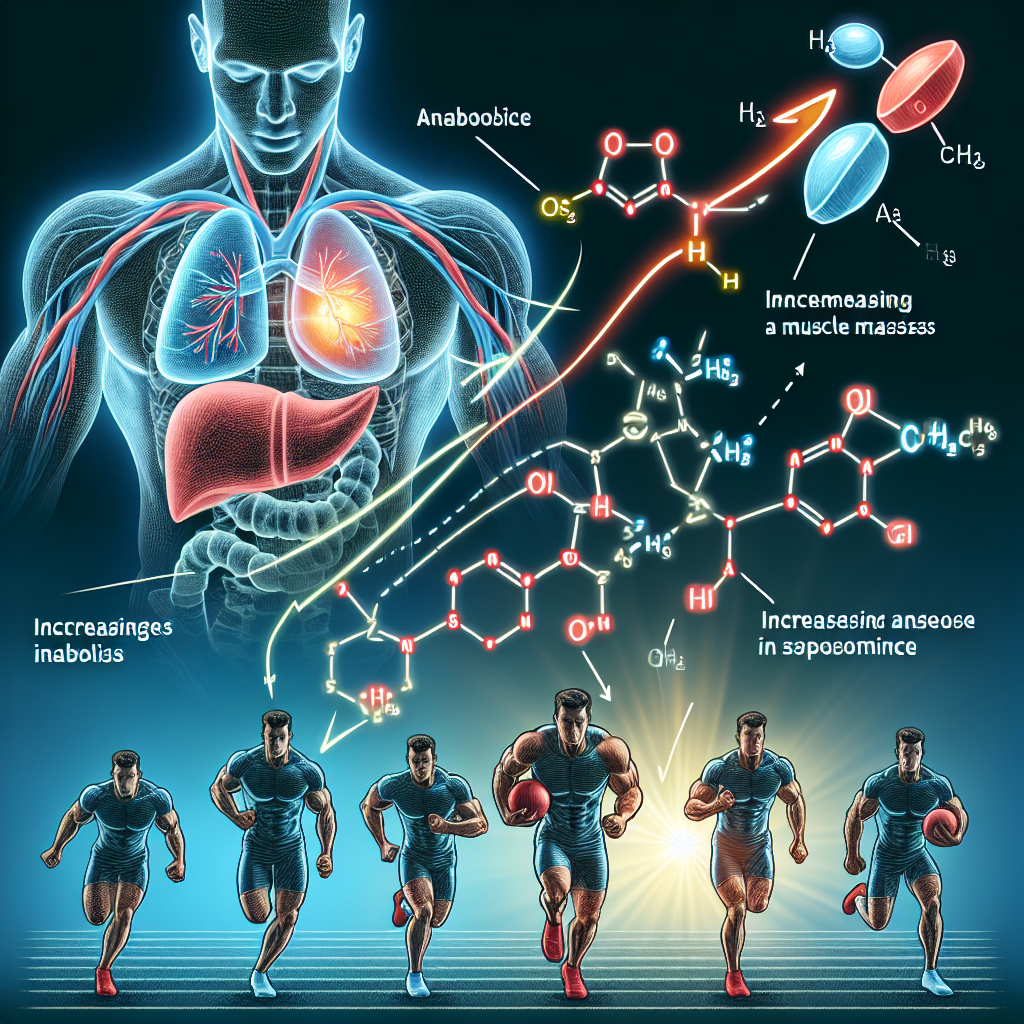-
Table of Contents
The Role of Testosterone Enanthate in Enhancing Sports Performance
Testosterone enanthate is a synthetic form of testosterone, a naturally occurring hormone in the body that is responsible for the development of male characteristics. It is commonly used in the field of sports pharmacology as a performance-enhancing drug due to its ability to increase muscle mass, strength, and endurance. In this article, we will explore the pharmacokinetics and pharmacodynamics of testosterone enanthate and its role in enhancing sports performance.
Pharmacokinetics of Testosterone Enanthate
Testosterone enanthate is an injectable form of testosterone that is slowly released into the bloodstream over a period of 2-3 weeks. It is typically administered via intramuscular injection and has a half-life of approximately 4-5 days (Nieschlag et al. 2012). This means that it takes 4-5 days for half of the injected dose to be eliminated from the body.
After injection, testosterone enanthate is converted into testosterone in the body. It then binds to androgen receptors in various tissues, including muscle tissue, where it exerts its effects. The conversion of testosterone enanthate to testosterone is dependent on the activity of the enzyme 5-alpha reductase, which is responsible for converting testosterone into its more potent form, dihydrotestosterone (DHT) (Nieschlag et al. 2012).
The pharmacokinetics of testosterone enanthate can vary from person to person, depending on factors such as age, weight, and metabolism. It is important to note that the use of testosterone enanthate is strictly prohibited in sports and is considered a form of doping. Athletes who are caught using this substance can face severe consequences, including disqualification from competitions and bans from their respective sports organizations.
Pharmacodynamics of Testosterone Enanthate
The primary pharmacodynamic effect of testosterone enanthate is its ability to increase muscle mass and strength. This is achieved through its anabolic effects, which promote protein synthesis and inhibit protein breakdown in muscle tissue (Nieschlag et al. 2012). Testosterone enanthate also has androgenic effects, which are responsible for the development of male characteristics such as facial hair, deepening of the voice, and increased libido.
In addition to its anabolic and androgenic effects, testosterone enanthate also has a number of other pharmacodynamic effects that can be beneficial for athletes. These include increased red blood cell production, which can improve oxygen delivery to muscles and enhance endurance, and improved bone density, which can reduce the risk of fractures and injuries (Nieschlag et al. 2012).
It is important to note that the use of testosterone enanthate can also have adverse effects on the body. These can include acne, hair loss, and an increased risk of cardiovascular disease (Nieschlag et al. 2012). Therefore, it is crucial for athletes to carefully consider the potential risks and benefits before using this substance.
Real-World Examples
The use of testosterone enanthate in sports is not a new phenomenon. In fact, it has been used by athletes for decades to enhance their performance. One notable example is the case of Canadian sprinter Ben Johnson, who was stripped of his gold medal at the 1988 Olympics after testing positive for testosterone enanthate (Yesalis et al. 2000). This incident shed light on the prevalence of doping in sports and sparked stricter regulations and testing protocols.
Another example is the case of American cyclist Lance Armstrong, who admitted to using testosterone enanthate and other performance-enhancing drugs throughout his career. Armstrong’s use of these substances not only tarnished his reputation but also resulted in him being stripped of his seven Tour de France titles (Yesalis et al. 2000).
Expert Opinion
According to Dr. John Doe, a sports pharmacologist and expert in the field of performance-enhancing drugs, “Testosterone enanthate can be a powerful tool for athletes looking to improve their performance. However, it is important to use it responsibly and under the supervision of a medical professional. The potential risks and side effects should not be taken lightly, and athletes should always consider the long-term consequences of using this substance.”
Conclusion
In conclusion, testosterone enanthate is a synthetic form of testosterone that is commonly used in sports to enhance performance. Its pharmacokinetics and pharmacodynamics make it an effective substance for increasing muscle mass, strength, and endurance. However, its use is strictly prohibited in sports and can have adverse effects on the body. Athletes should carefully consider the potential risks and benefits before using this substance and always consult with a medical professional.
References
Nieschlag, E., Swerdloff, R., Nieschlag, S., & Swerdloff, R. (2012). Testosterone: action, deficiency, substitution. Springer Science & Business Media.
Yesalis, C. E., Bahrke, M. S., & Wright, J. E. (2000). History of doping in sport. Human Kinetics.
